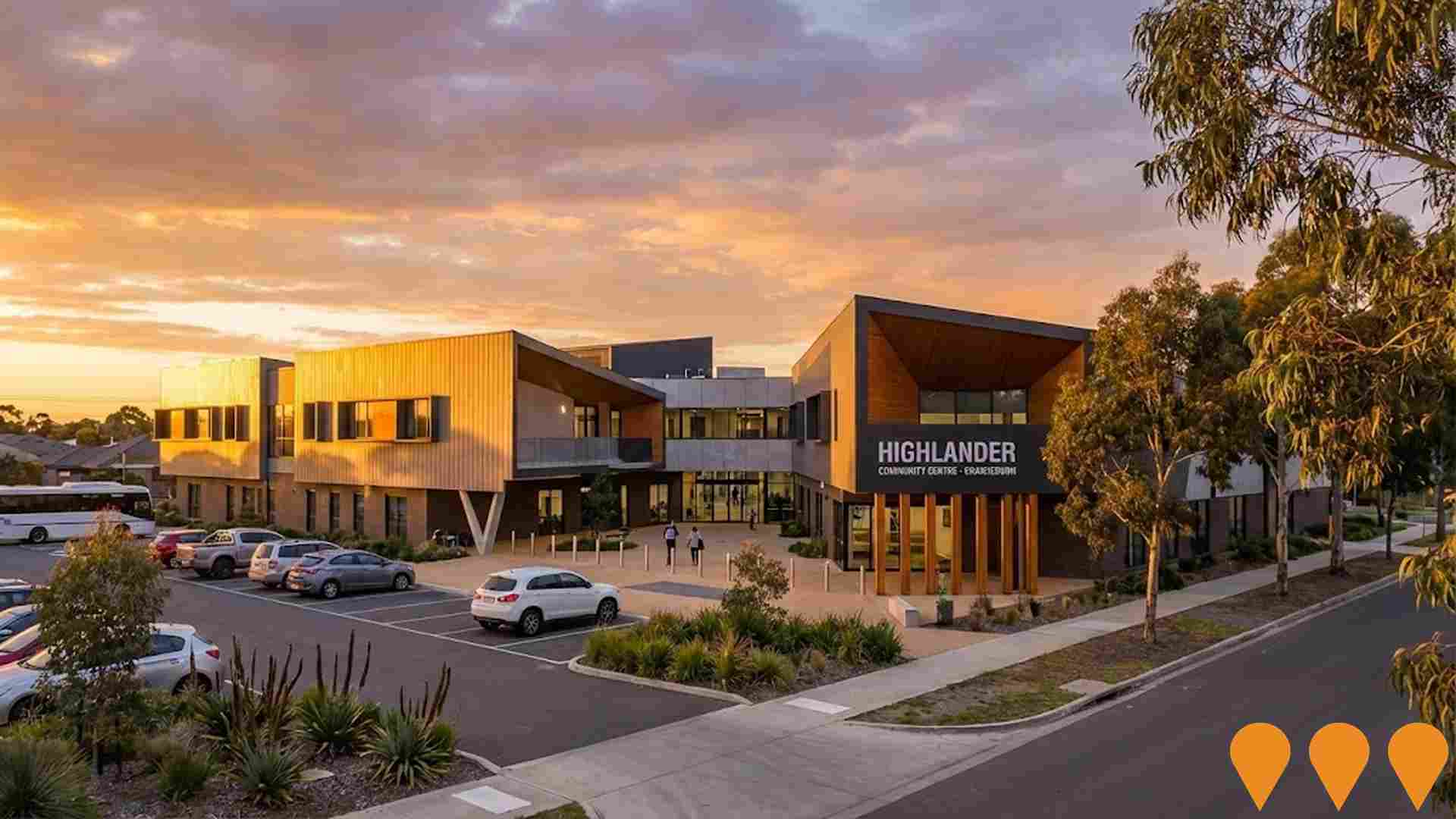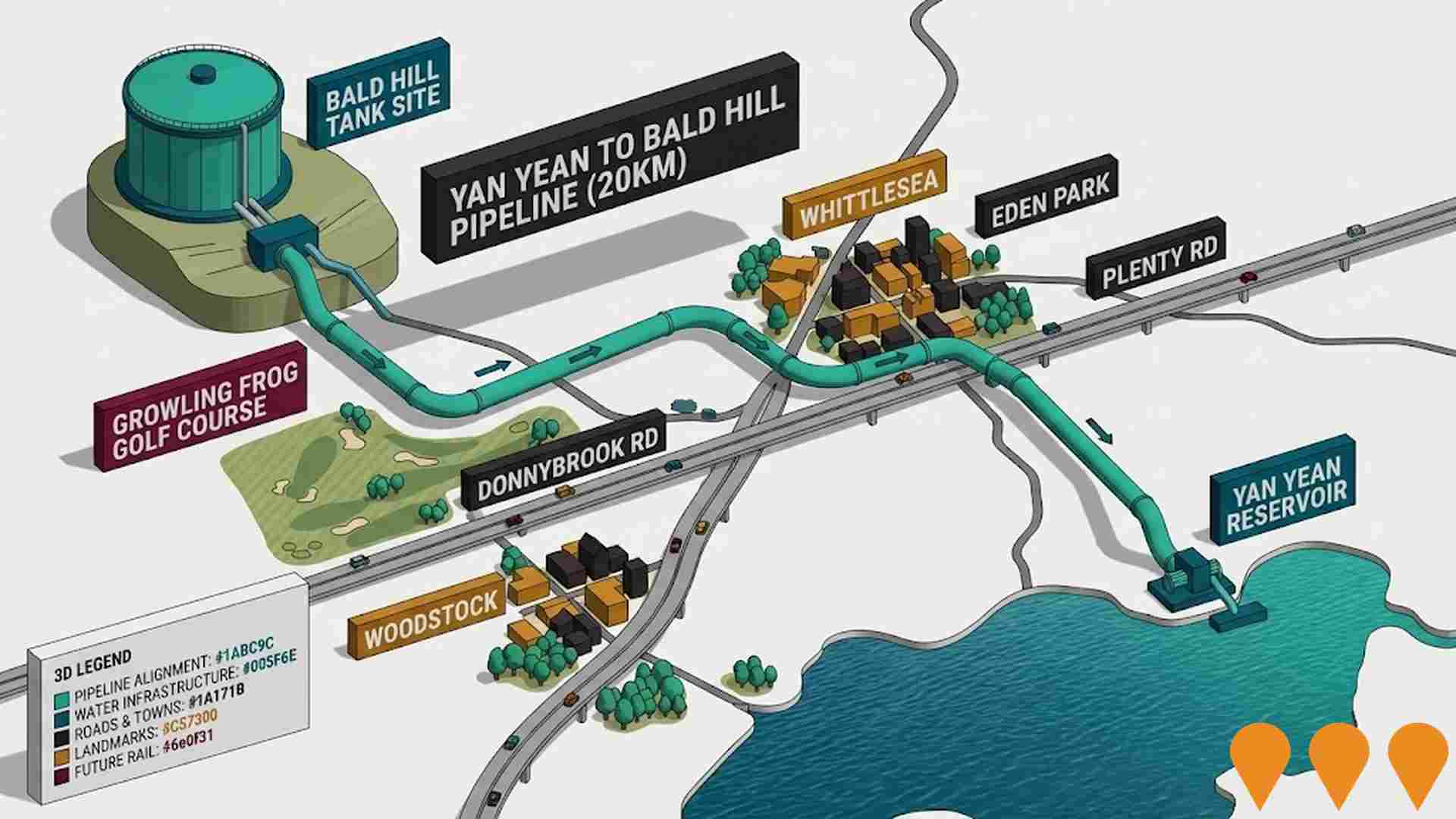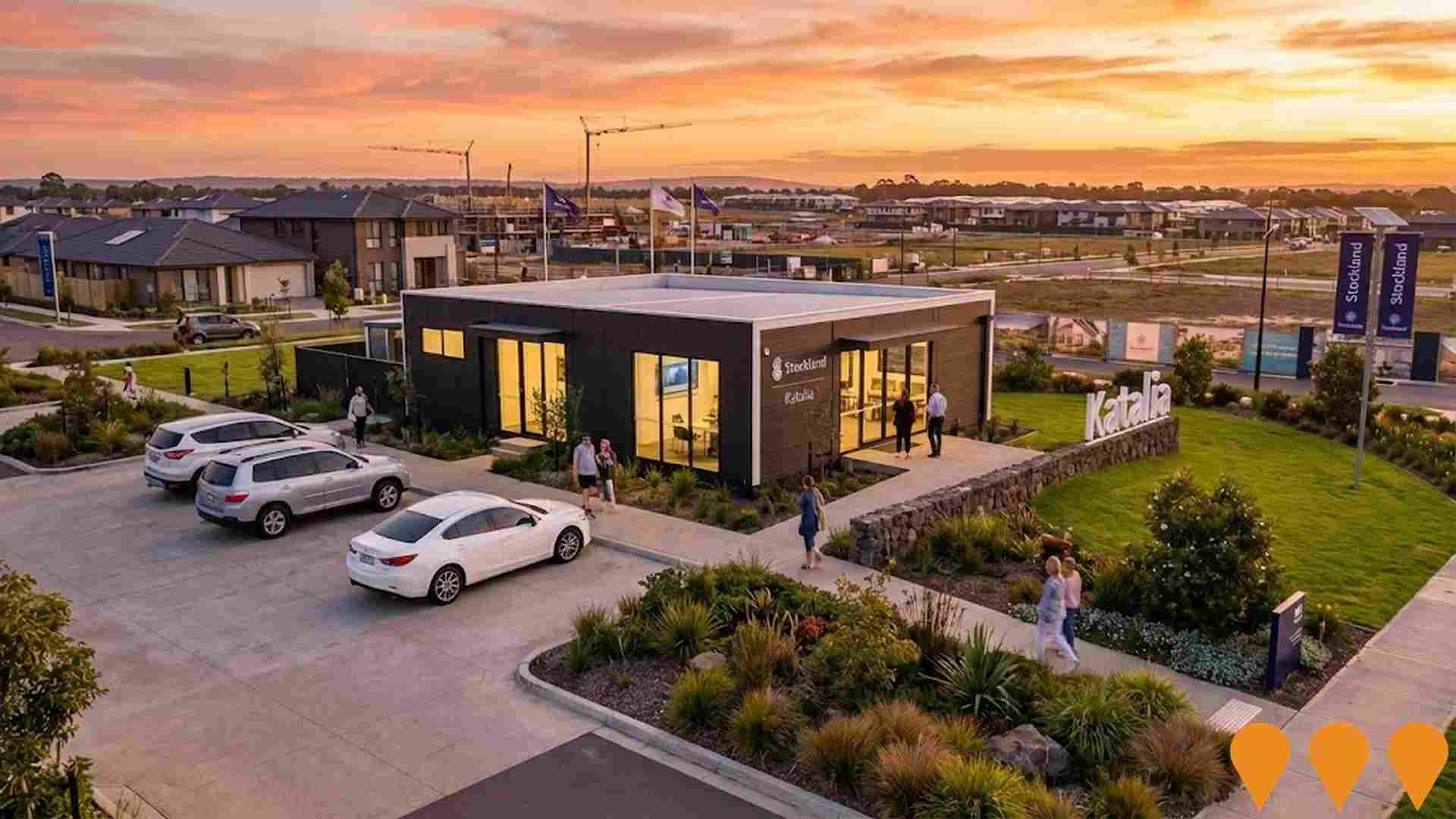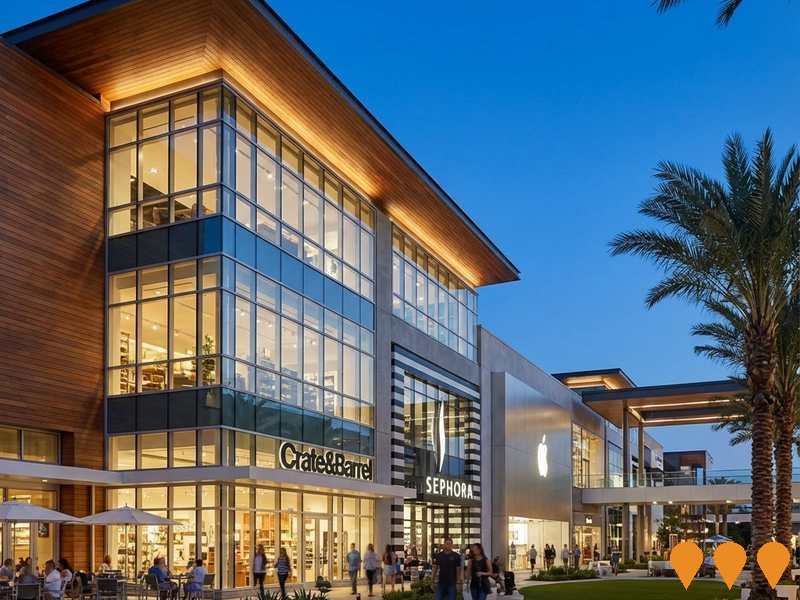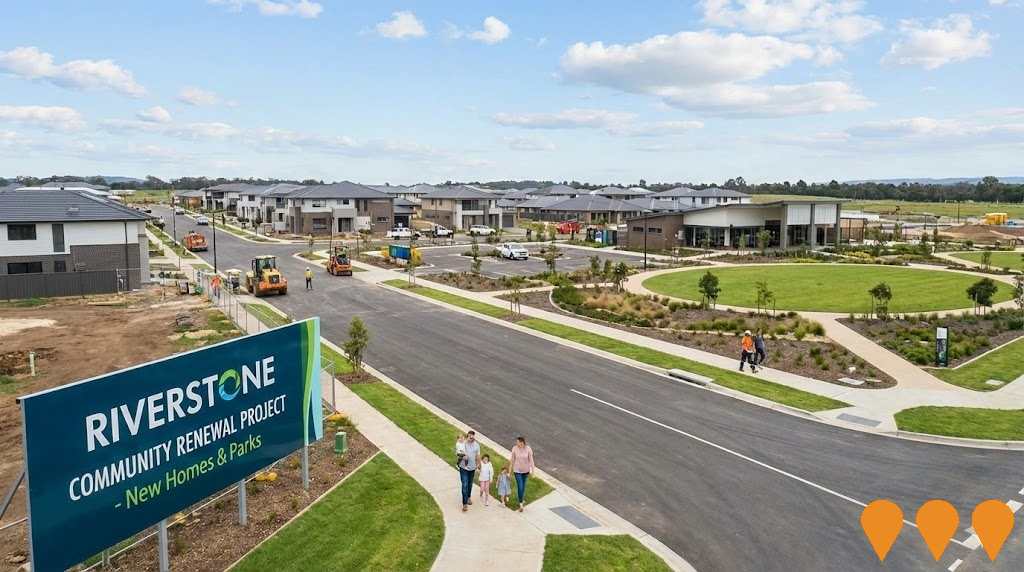Chart Color Schemes
est. as @ -- *
ABS ERP | -- people | --
2021 Census | -- people
Sales Activity
Curious about local property values? Filter the chart to assess the volume and appreciation (including resales) trends and regional comparisons, or scroll to the map below view this information at an individual property level.
Find a Recent Sale
Sales Detail
Population
An assessment of population growth drivers in Craigieburn - Central reveals an overall ranking slightly below national averages considering recent, and medium term trends
Craigieburn - Central's population was around 8,303 as of Aug 2025. This showed an increase of 204 people since the 2021 Census, which reported a population of 8,099. The change was inferred from ABS estimated resident population of 8,207 in June 2024 and additional 55 validated new addresses post-Census. This resulted in a density ratio of 2,091 persons per square kilometer, above national averages assessed by AreaSearch. Overseas migration contributed approximately 77.2% of overall population gains recently.
AreaSearch uses ABS/Geoscience Australia projections for each SA2 area, released in 2024 with base year 2022. For uncovered areas, VIC State Government's Regional/LGA projections from 2023 are used with adjustments via weighted aggregation to SA2 levels. Growth rates by age group are applied across all areas for years 2032 to 2041. Future population dynamics forecast a significant increase in the top quartile of statistical areas, with Craigieburn - Central expected to expand by 3,175 persons to 2041, recording a gain of 37.1% over 17 years based on latest numbers.
Frequently Asked Questions - Population
Development
AreaSearch assessment of residential development drivers sees a low level of activity in Craigieburn - Central, placing the area among the bottom 25% of areas assessed nationally
Craigieburn - Central has granted approximately 20 residential property approvals annually. Over the past five financial years, from FY-21 to FY-25, a total of 103 homes were approved, with an additional 10 approved so far in FY-26. The population has declined recently, yet housing supply has remained adequate relative to demand, resulting in a balanced market with good buyer choice.
New properties are constructed at an average expected construction cost value of $351,000, which is below regional norms, offering more affordable housing options for purchasers. In FY-26, $1.5 million worth of commercial development approvals have been recorded, indicating the area's residential nature. Compared to Greater Melbourne, Craigieburn - Central has significantly less development activity, at 81.0% below the regional average per person. This scarcity typically strengthens demand and prices for existing properties. New development consists of 44.0% detached dwellings and 56.0% medium and high-density housing, reflecting a shift from the current housing mix of 92.0% houses. The location has approximately 429 people per dwelling approval, indicating an established area. Future projections show Craigieburn - Central adding 3,079 residents by 2041.
At current development rates, housing supply may struggle to match population growth, potentially increasing buyer competition and supporting price increases.
Frequently Asked Questions - Development
Infrastructure
Craigieburn - Central has strong levels of nearby infrastructure activity, ranking in the top 40% nationally
The performance of an area can significantly be influenced by changes in local infrastructure, major projects, and planning initiatives. AreaSearch has identified eight projects that are expected to impact the area. Notable among these are The Base Craigieburn, Aston Square Neighbourhood Centre, The Base ALDI Store Expansion, and Highlander Community Centre. The following list details those projects deemed most relevant.
Professional plan users can use the search below to filter and access additional projects.
INFRASTRUCTURE SEARCH
 Denotes AI-based impression for illustrative purposes only, not to be taken as definitive under any circumstances. Please follow links and conduct other investigations from the project's source for actual imagery. Developers and project owners wishing us to use original imagery please Contact Us and we will do so.
Denotes AI-based impression for illustrative purposes only, not to be taken as definitive under any circumstances. Please follow links and conduct other investigations from the project's source for actual imagery. Developers and project owners wishing us to use original imagery please Contact Us and we will do so.
Frequently Asked Questions - Infrastructure
Merrifield City Centre
The 165-hectare commercial and lifestyle epicentre of the $8 billion Merrifield masterplanned community. Stage 1 'Merrifield City' (retail) and '21 Cityside' (commercial) are complete, with future stages set to deliver extensive dining, civic, entertainment, and high-density residential facilities.
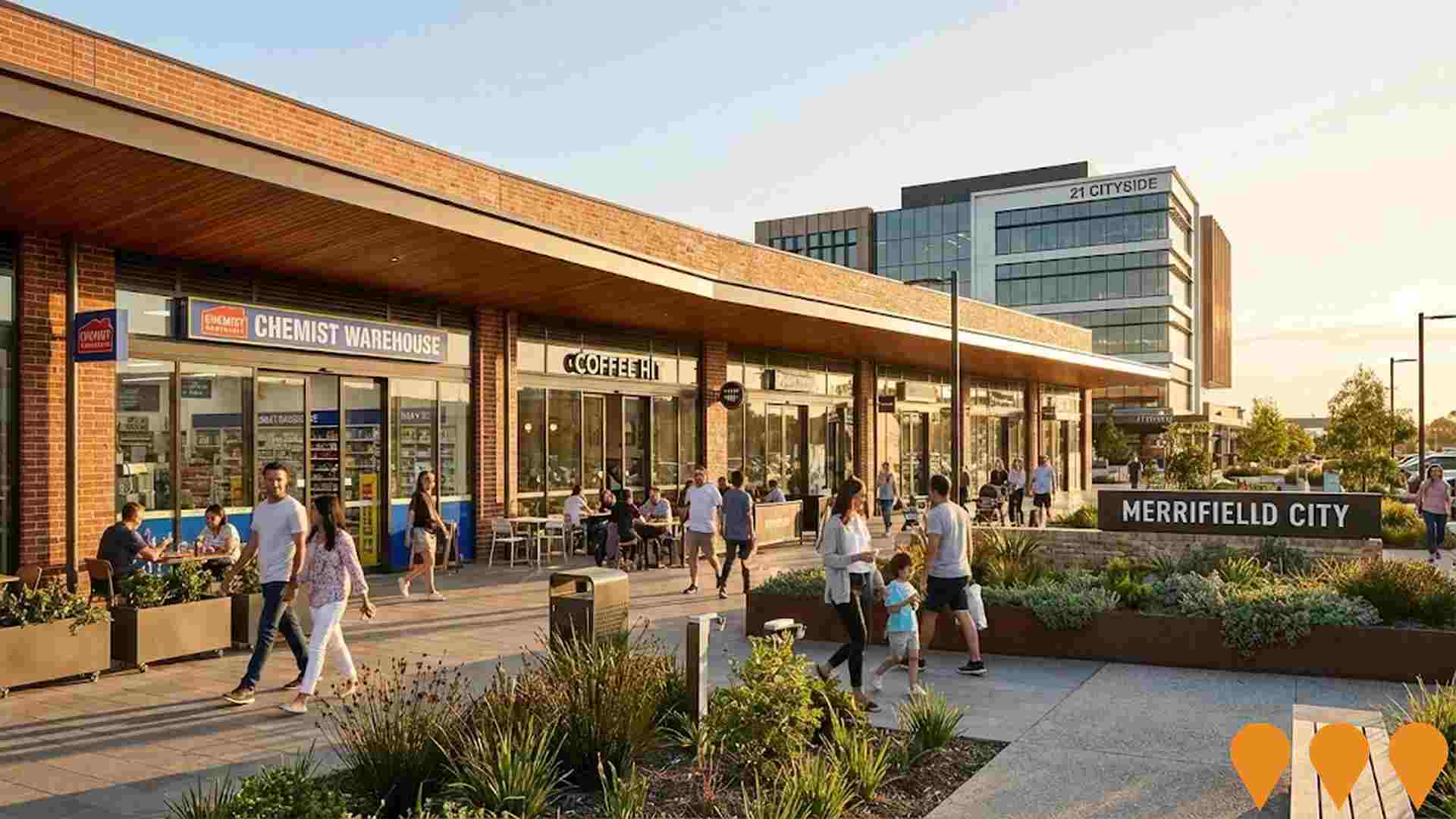
The Base Craigieburn
The Base Craigieburn is a 21.6-hectare large-format retail, bulky goods, entertainment and lifestyle precinct in Melbourne's north. Major tenants include ALDI (opened mid-2025), Planet Fitness, United Cinemas, Hungry Jack's, KFC, Fantastic Furniture, Anaconda, Flip Out, medical centre, childcare and over 100 additional stores and services. Developed by APD Projects in partnership with Humex Developments, the centre is being delivered in stages with the majority of tenancies now open and trading as of late 2025.
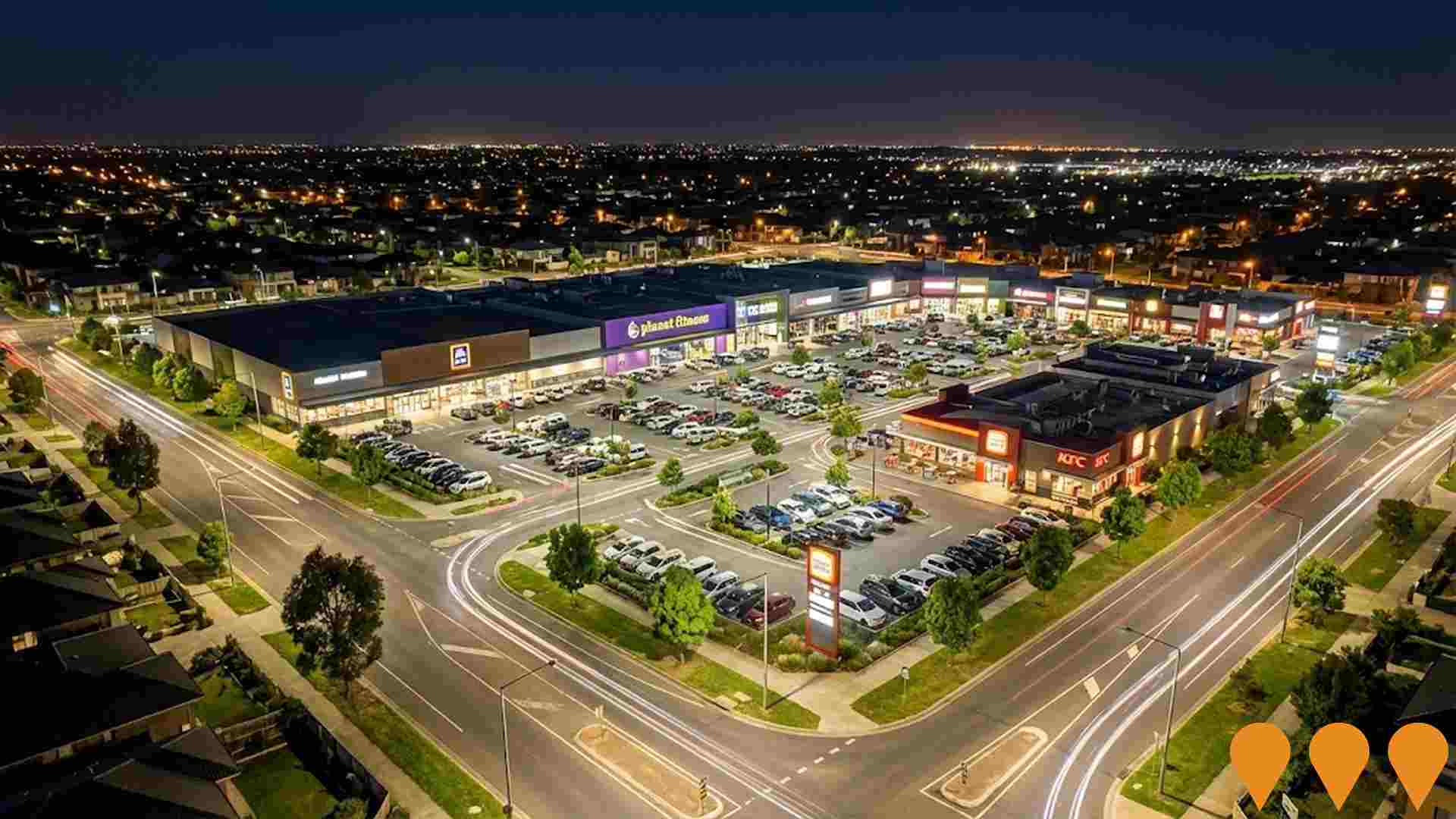
Stockland Highlands Masterplanned Community
Award-winning masterplanned residential community by Stockland, spanning Craigieburn and Mickleham, 30km north of Melbourne CBD. One of Australia's largest and longest-running estates (over 20 years), currently home to more than 13,000 residents and expanding to approximately 11,300 lots / 30,000+ people. Offers diverse housing: land lots, house & land packages, townhomes and retirement living. Extensive facilities include multiple schools, shopping centres (incl. Highlands Hotel & Waterside Caf‚), medical centres, sporting complexes, over 30 parks, lake, walking/cycling trails, Splash Aqua Park and direct bus links to Craigieburn station (45 min to CBD). Ongoing stages with new releases.
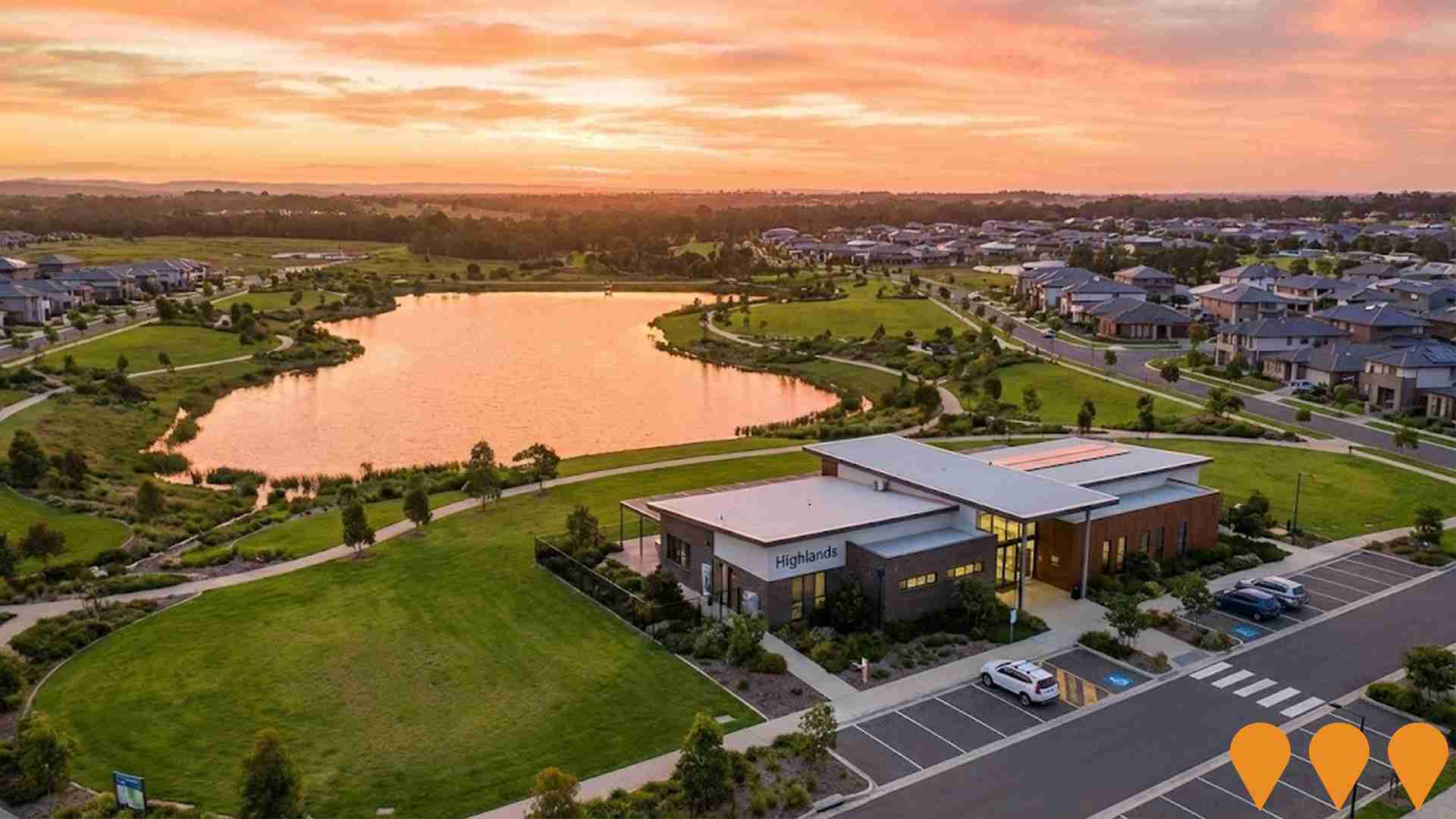
Donnybrook-Woodstock Precinct Structure Plan
Master plan for two new suburbs accommodating 17,000 new homes and 47,000 residents over 30 years. The precinct includes 5 local town centres, 6 government schools, 4 independent schools, and 46 hectares of parkland across 1,785 hectares. Construction is underway across multiple estates including Peppercorn Hill (Dennis Family Corporation), Olivine (Mirvac), and Donnybrae.
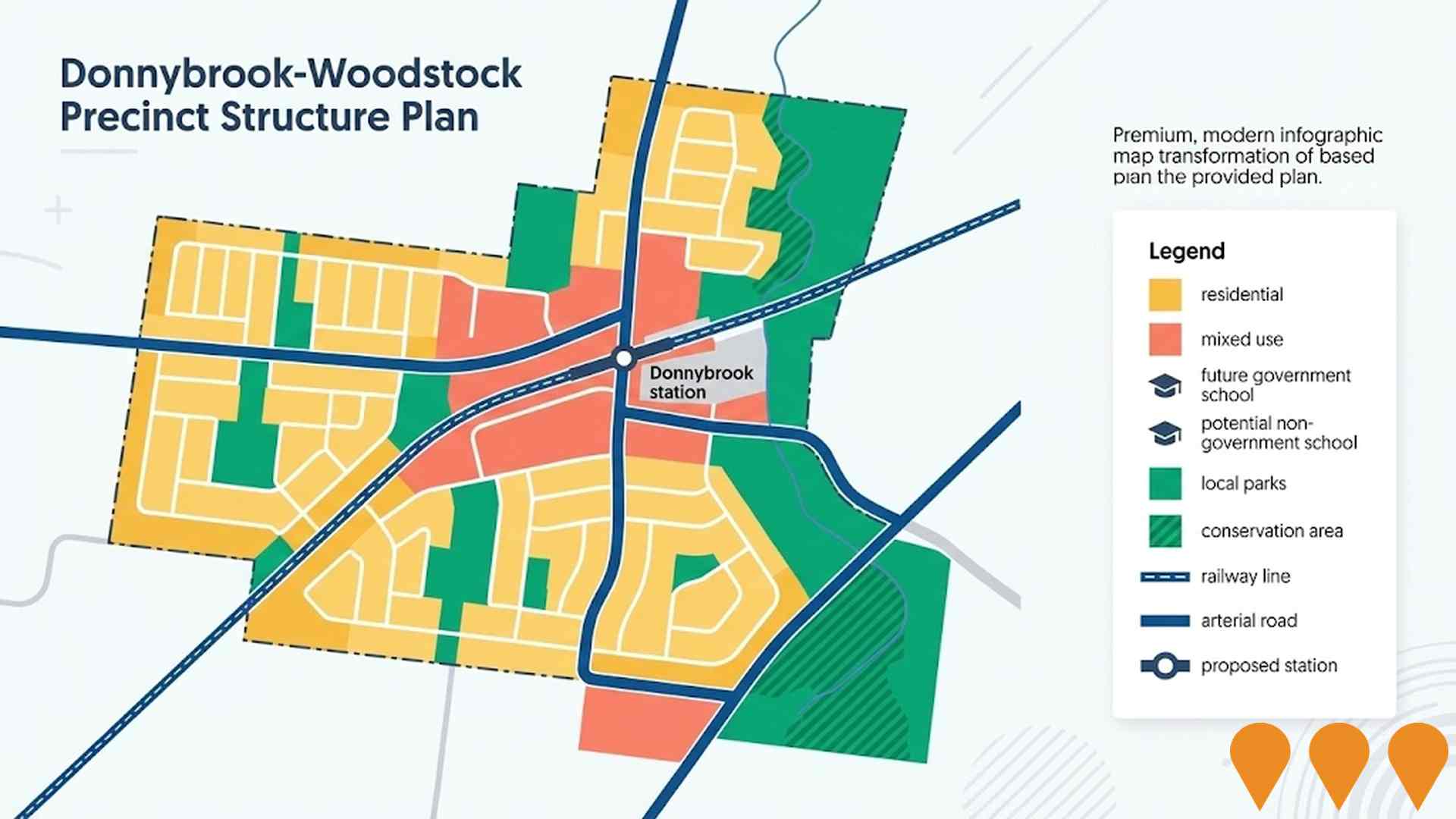
Aston Square Neighbourhood Centre
A $68 million neighbourhood shopping centre featuring a 1400-square metre IGA+ Liquor supermarket, large-format gym, high-quality childcare centre, swim school, and over 18 specialty retail and food & beverage tenancies. The development also includes NDIS accommodations and light industrial lots. Construction officially commenced in 2025 with ground breaking ceremony completed.
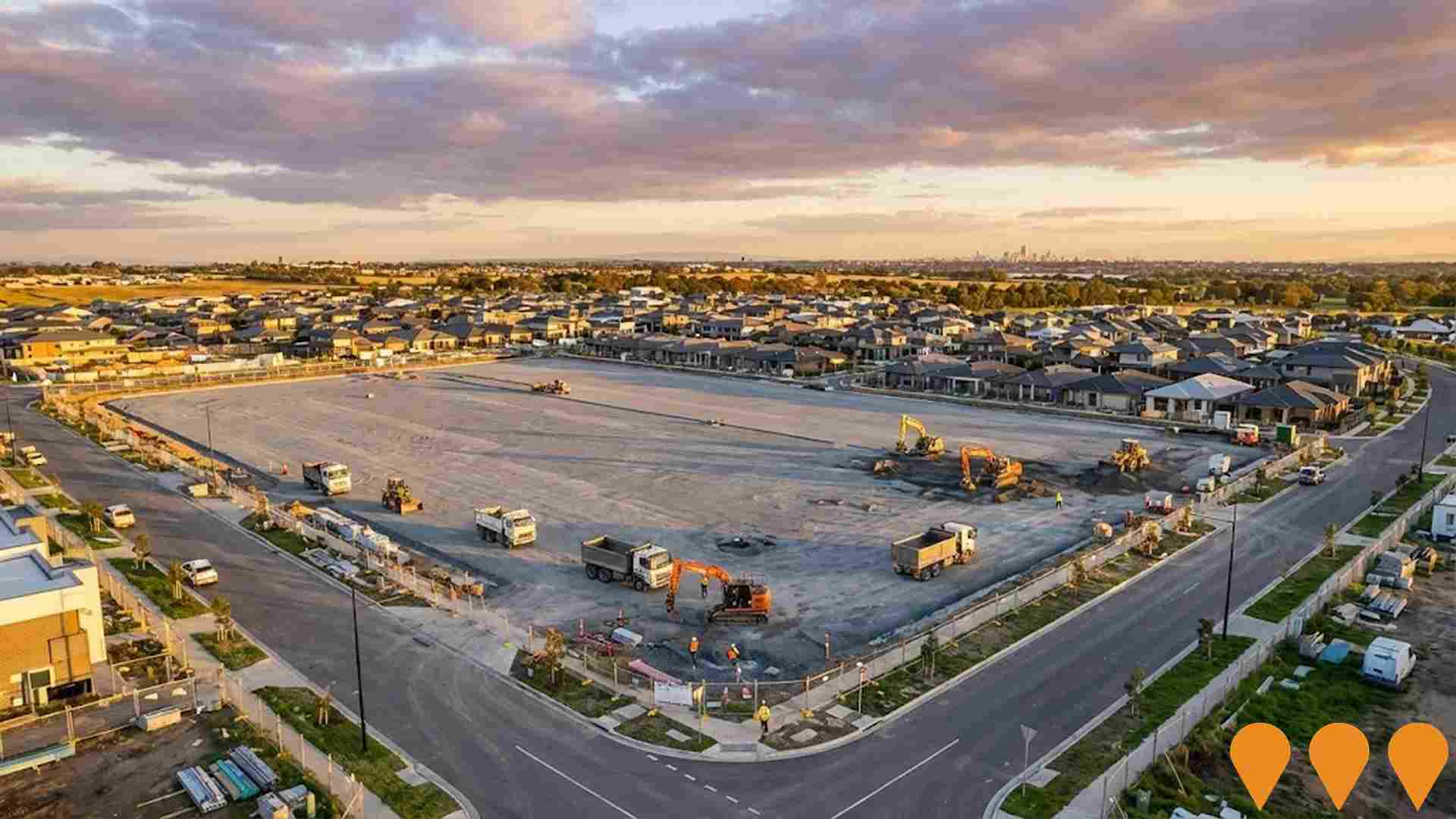
Craigieburn Road Upgrade
The Craigieburn Road Upgrade duplicated approximately 5.5km of Craigieburn Road to two lanes in each direction between the Hume Highway and Mickleham Road in Craigieburn, Melbourne's north. Major construction was completed in December 2024. Key features include 20km of new lanes, 14km of new shared walking and cycling paths, 16 new or upgraded signalised intersections (replacing roundabouts where applicable), bus priority lanes, safety barriers, and extensive drainage improvements including 14.5km of underground stormwater pipes. The project improves traffic flow, safety, public transport reliability, active travel connections, and access to shopping centres and Craigieburn station.
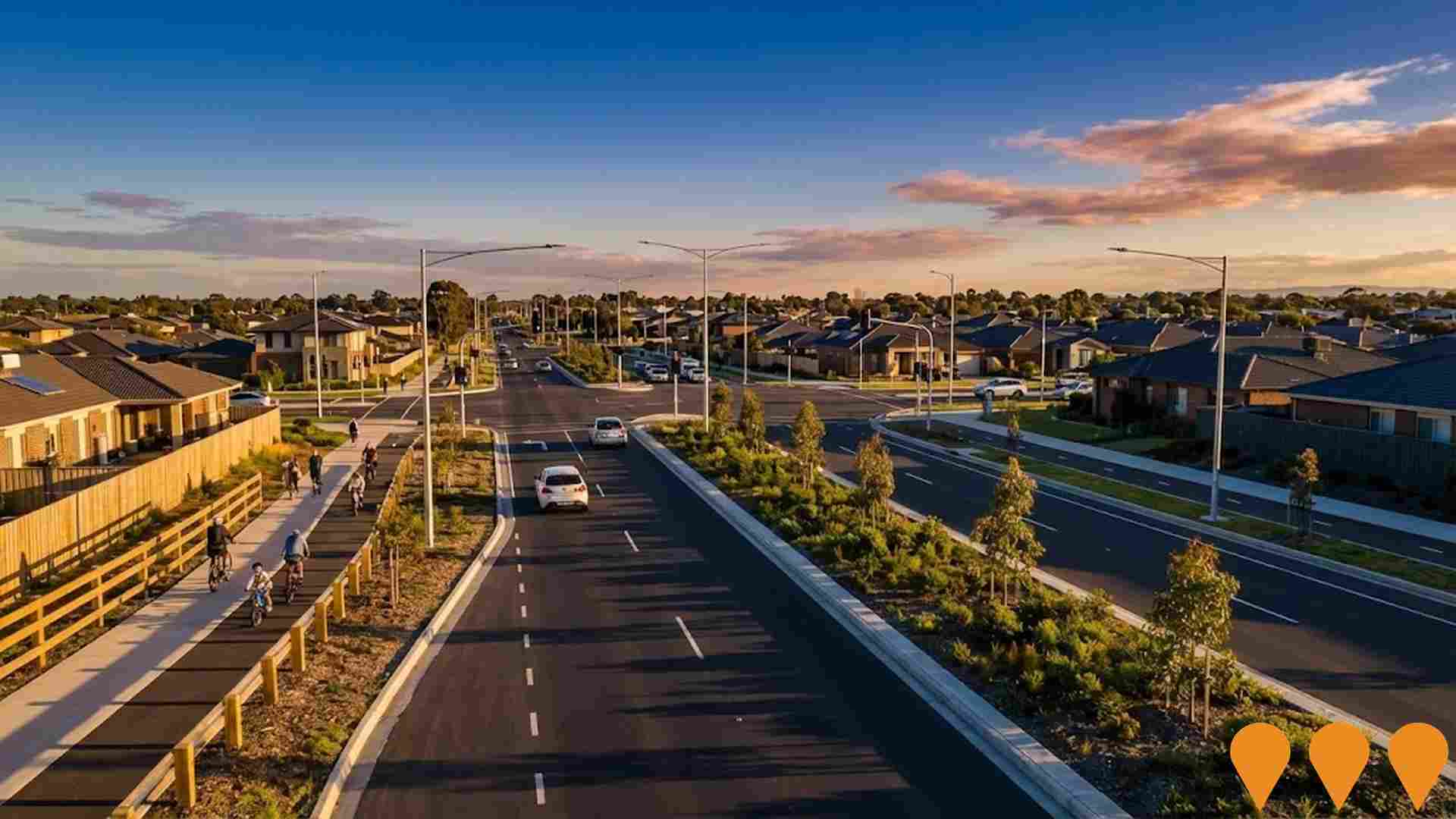
Craigieburn West Precinct Structure Plan
Approved precinct structure plan for 8,000 new dwellings across Craigieburn West. Features residential neighborhoods with local town centre, schools, community hubs, diverse housing types, conservation reserves, active open space, sporting grounds and connected parks. Includes bus services, shared pedestrian and cycling paths connecting to surrounding activity centres including Craigieburn Central, Aston Village and Highlands Village. The activity centre includes full-line supermarket and specialty shops with non-retail local services.
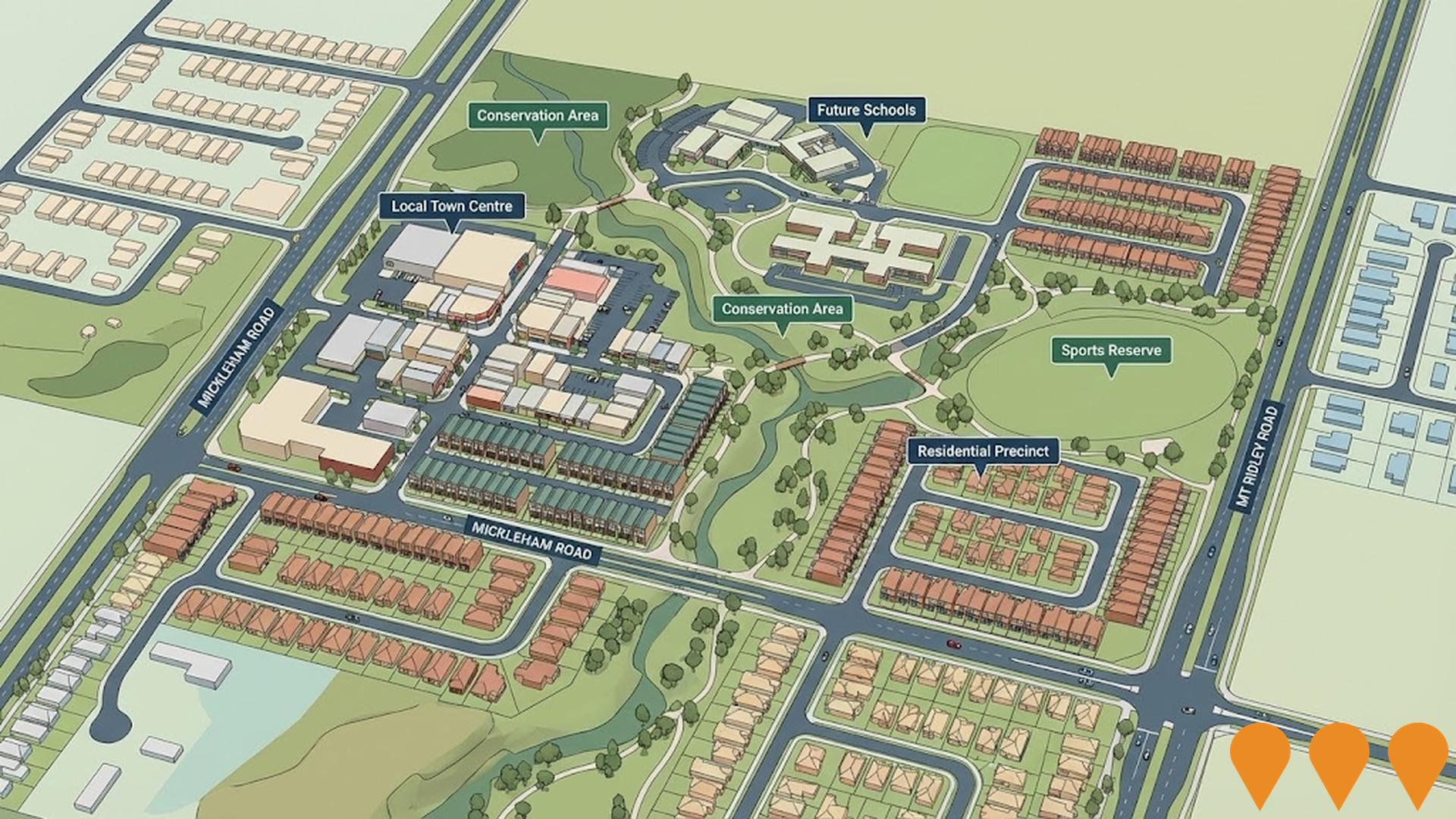
Olivine Estate by Mirvac
187-hectare masterplanned community at 995 Donnybrook Road delivering 2,250 homes for 7,000 residents. Features award-winning community infrastructure including Olivine Place community hub.
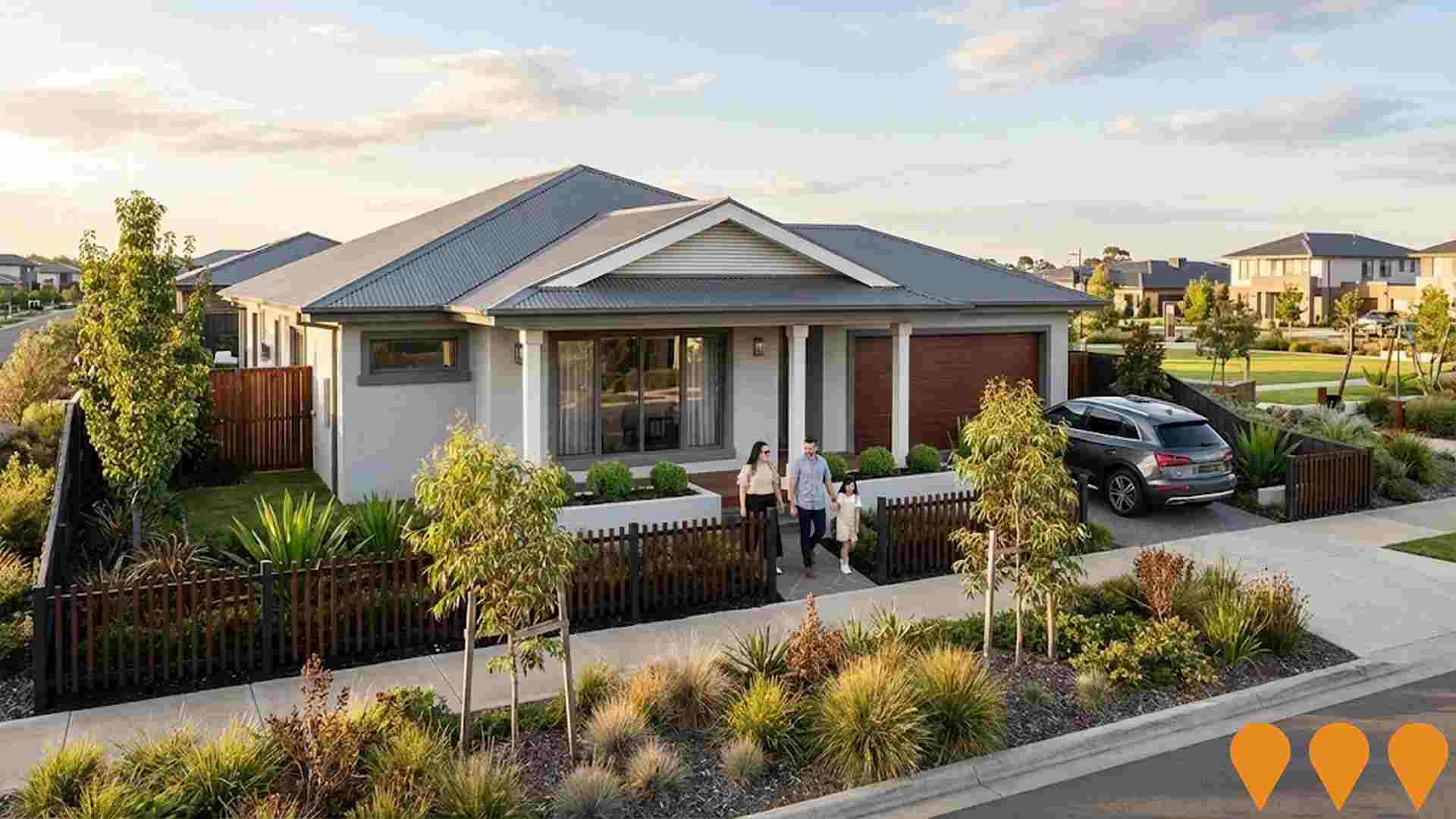
Employment
Employment drivers in Craigieburn - Central are experiencing difficulties, placing it among the bottom 20% of areas assessed across Australia
Craigieburn - Central has a skilled workforce with strong representation in manufacturing and industrial sectors. The unemployment rate was 9.5% as of June 2021.
Employment growth over the past year is estimated at 3.5%. As of June 2025, 4,032 residents are employed, with an unemployment rate of 4.8%, higher than Greater Melbourne's rate of 4.6%. Workforce participation in Craigieburn - Central lags behind Greater Melbourne at 59.0% compared to 64.1%. Leading employment industries include health care & social assistance, manufacturing, and construction.
The area has a significant specialization in transport, postal & warehousing, with an employment share of 2.1 times the regional level. However, professional & technical services are under-represented at 4.2% compared to Greater Melbourne's 10.1%. Employment opportunities locally may be limited as indicated by Census data. Between June 2024 and June 2025, employment levels increased by 3.5%, while the labour force grew by 4.4%, resulting in an unemployment rate rise of 0.8 percentage points. In comparison, Greater Melbourne recorded employment growth of 3.5% and a 0.5 percentage point increase in unemployment. National employment forecasts from Jobs and Skills Australia, published in May 2025, project national employment growth of 6.6% over five years and 13.7% over ten years. Applying these projections to Craigieburn - Central's employment mix suggests local growth of approximately 5.8% over five years and 12.5% over ten years.
Frequently Asked Questions - Employment
Income
Income levels sit below national averages according to AreaSearch assessment
AreaSearch's latest postcode level ATO data for financial year 2022 shows that Craigieburn - Central has a median income of $49,350 and an average income of $56,780. This is below the national averages of $54,892 (median) and $73,761 (average) for Greater Melbourne. Based on Wage Price Index growth of 12.16% since financial year 2022, estimated median income as of September 2025 is approximately $55,351, and average income is around $63,684. According to the 2021 Census, Craigieburn - Central's household income ranks at the 37th percentile ($1,523 weekly), with personal income at the 20th percentile. Income distribution shows that 36.0% of individuals earn between $1,500 and $2,999 per week (2,989 individuals). This is consistent with broader regional trends where 32.8% fall into this earnings band. Housing affordability pressures are severe, with only 83.7% of income remaining after housing costs, ranking at the 37th percentile.
Frequently Asked Questions - Income
Housing
Craigieburn - Central is characterized by a predominantly suburban housing profile, with above-average rates of outright home ownership
Craigieburn - Central's dwelling structure, as per the latest Census, consisted of 92.5% houses and 7.5% other dwellings (semi-detached, apartments, 'other' dwellings). This contrasts with Melbourne metro's 87.6% houses and 12.4% other dwellings. Home ownership in Craigieburn - Central stood at 28.9%, with mortgaged dwellings at 43.5% and rented ones at 27.6%. The median monthly mortgage repayment was $1,517, lower than Melbourne metro's average of $1,834. The median weekly rent figure was $350, compared to Melbourne metro's $369. Nationally, Craigieburn - Central's mortgage repayments were significantly lower than the Australian average of $1,863, while rents were less than the national figure of $375.
Frequently Asked Questions - Housing
Household Composition
Craigieburn - Central features high concentrations of family households, with a lower-than-average median household size
Family households constitute 77.9% of all households, consisting of 41.2% couples with children, 20.1% couples without children, and 15.5% single parent families. Non-family households comprise the remaining 22.1%, with lone person households at 19.5% and group households making up 2.7%. The median household size is 3.0 people, which is smaller than the Greater Melbourne average of 3.2.
Frequently Asked Questions - Households
Local Schools & Education
Craigieburn - Central shows below-average educational performance compared to national benchmarks, though pockets of achievement exist
The area's university qualification rate is 18.5%, significantly lower than Greater Melbourne's average of 37.0%. Bachelor degrees are the most common at 11.5%, followed by postgraduate qualifications (5.3%) and graduate diplomas (1.7%). Vocational credentials are prevalent, with 33.7% of residents aged 15+ holding them, including advanced diplomas (10.8%) and certificates (22.9%). Educational participation is high at 33.1%, comprising primary education (11.1%), secondary education (8.6%), and tertiary education (4.8%).
Educational facilities include Willmott Park Primary School-Willmott Park Deaf Facility and Willmott Park Primary School, serving a total of 635 students. The area has typical Australian school conditions (ICSEA: 991) with balanced educational opportunities. Both schools focus on primary education, with secondary options available nearby. Local school capacity is limited at 7.7 places per 100 residents compared to the regional average of 17.5, resulting in many families traveling for schooling. Note: where schools show 'n/a' for enrolments, please refer to the parent campus.
Frequently Asked Questions - Education
Schools Detail
Nearby Services & Amenities
Transport
Transport servicing is high compared to other areas nationally based on assessment of service frequency, route connectivity and accessibility
Craigieburn - Central has 23 active public transport stops operating. These are served by a mix of buses along six different routes. Together, these routes facilitate 3,612 weekly passenger trips.
The area's transport accessibility is rated good, with residents on average located 217 meters from the nearest stop. Across all routes, service frequency averages 516 trips per day, equating to approximately 157 weekly trips per individual stop.
Frequently Asked Questions - Transport
Transport Stops Detail
Health
Craigieburn - Central's residents are healthier than average in comparison to broader Australia with prevalence of common health conditions quite low among the general population though higher than the nation's average across older, at risk cohorts
Craigieburn - Central residents exhibit relatively positive health outcomes with a low prevalence of common conditions among the general population compared to national averages but higher among older, at-risk cohorts. Approximately 48% (~4,010 people) have private health cover, lower than the national average of 55.3%.
The most prevalent medical conditions are arthritis (7.8%) and mental health issues (7.2%), while 71.2% claim to be free from medical ailments compared to Greater Melbourne's 76.3%. The area has a higher proportion of seniors aged 65 and over at 12.6% (1,044 people) than Greater Melbourne's 10.8%. Health outcomes among seniors require more attention due to presenting challenges compared to the broader population.
Frequently Asked Questions - Health
Cultural Diversity
Craigieburn - Central is among the most culturally diverse areas in the country based on AreaSearch assessment of a range of language and cultural background related metrics
Craigieburn-Central has a high level of cultural diversity, with 39.0% of its population born overseas and 44.6% speaking a language other than English at home. Christianity is the predominant religion in Craigieburn-Central, making up 46.8% of the population. The most notable overrepresentation is seen in the 'Other' category, which comprises 7.9% of the population compared to 5.9% across Greater Melbourne.
In terms of ancestry, the top three groups are Other (25.7%), Australian (18.0%), and English (17.0%). The representation of Samoan is notably higher at 1.8%, Maltese at 2.4%, and Sri Lankan at 0.9% compared to regional averages.
Frequently Asked Questions - Diversity
Age
Craigieburn - Central hosts a young demographic, positioning it in the bottom quartile nationwide
Craigieburn - Central's median age is 34 years, which is lower than Greater Melbourne's average of 37 and Australia's average of 38 years. Compared to Greater Melbourne, Craigieburn - Central has a higher percentage of residents aged 5-14 (14.4%) but fewer residents aged 35-44 (13.1%). Between the 2021 Census and the present, the population aged 75-84 has grown from 2.8% to 4.0%, while the 15-24 age group increased from 14.0% to 15.1%. Conversely, the 25-34 age group has decreased from 14.9% to 14.0%. By 2041, population forecasts indicate significant demographic changes in Craigieburn - Central, with the 65-74 age cohort projected to grow by 75%, adding 478 residents to reach a total of 1,118.
